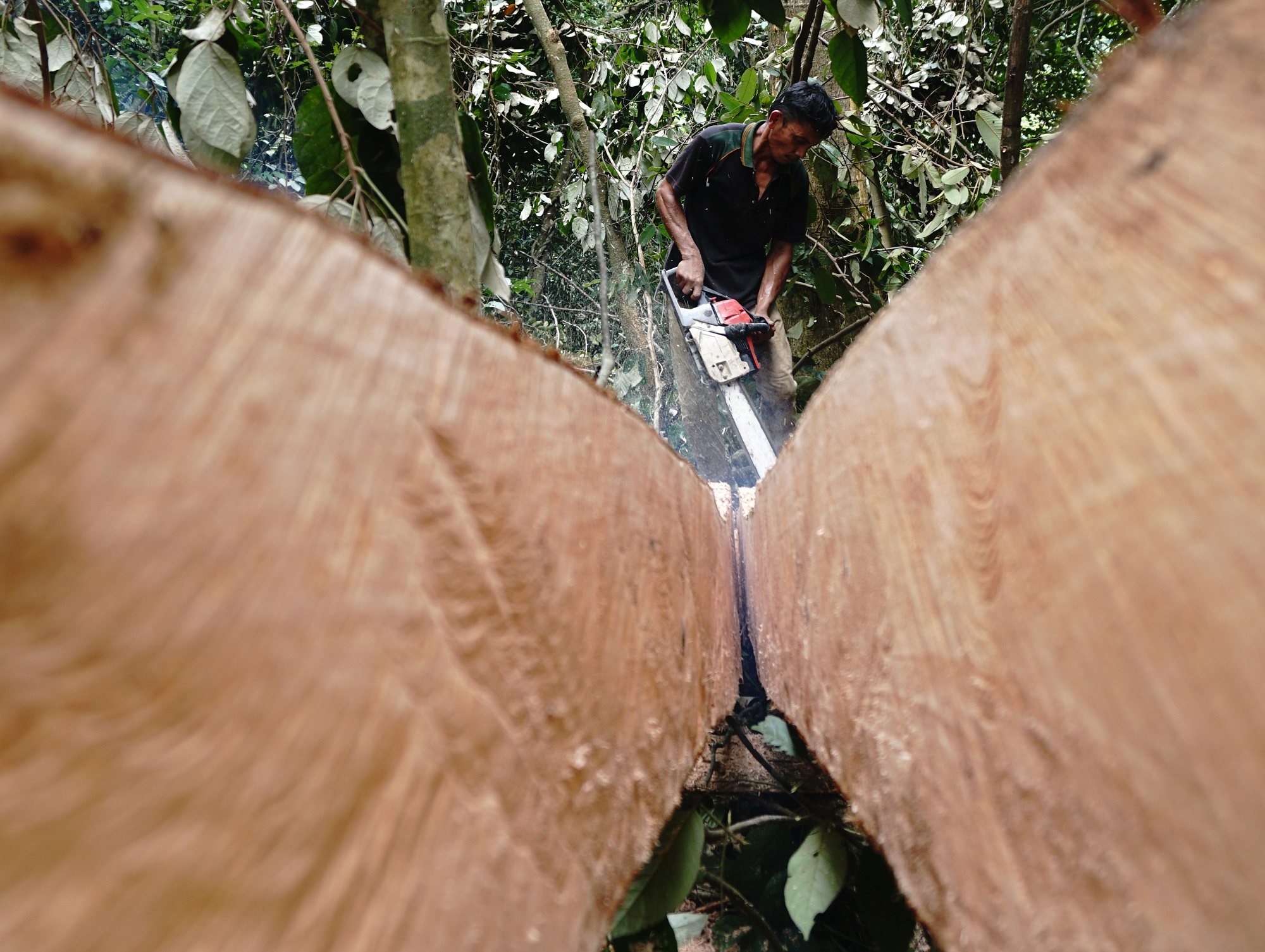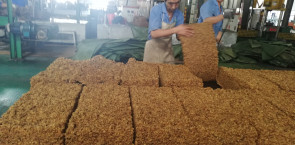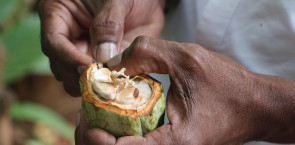
Scientific testing techniques to identify the species and verify the geographic origin of commodities can be a powerful tool to aid the efforts of halting deforestation, curbing illegal harvesting and trade and reducing subsequent negative effects on our climate.
The new European Union Deforestation Regulation (EUDR) attempts to stem the consumption of products originating from supply chains associated with deforestation or forest degradation.
The regulation applies to seven key commodities, including wood, cattle, cocoa, coffee, palm oil, soy, and rubber – as well as some derivative products including chocolate, leather, charcoal, furniture, printed-paper products, and several chemical products derived from palm oil. These commodities and products are seen by the EU as strongly associated with deforestation and worldwide biodiversity loss.
One key requirement of the new regulation is that Operators (generally EU-based companies importing or exporting these commodities or products into or out of the EU) must provide geolocation data of origin - as well as the date and time of harvesting or production - for every relevant product that is being placed on EU markets.
Due to the complexity of most supply chains, it is often challenging to confirm the origin of products or, in the case of wood products, obtain accurate information on the species harvested. Insufficient tracking mechanisms and traditional paper-based systems often lead to misidentification – and possibly fraudulent transfer of information – regarding species and origin. This shortcoming challenges the ability of organisations to determine risks, pinpoint potential legal non-compliances, or evaluate whether a product might be linked to deforestation or forest degradation.
Scientific testing and wood-products
Scientific testing can support companies in learning more about the origin of forest-risk commodities. When it comes to timber, for example, operators are using various scientific testing techniques to verify both origin and species.
“For timber, scientific testing techniques are important as they support Operators in two ways. Firstly, these techniques help verify the genus or species of wood included in products. Secondly, other techniques can verify the claim of the harvest origin provided by a supplier or sub-supplier” explained David Hadley, Director of Preferred by Nature’s Regulatory Impact Programme.
Reference data
The ability to conduct such scientific testing relies on the availability of relevant reference data, against which samples can be tested. World Forest ID, a US-based non-profit organisation, is working to create a comprehensive global geolocated reference library of timber and other forest risk commodities. As of January 2023, the organisation has already collected more than 22,000 samples from across 167 species and 31 countries.
To understand more about the use of reference databases and scientific testing techniques, we talked to Victor Deklerck, Research Leader for the World Forest ID Programme at the Royal Botanic Gardens, Kew, a core partner of World Forest ID.
Victor’s expertise lies in timber species and origin verification techniques, data analysis, wood science, and forestry. He leads the World Forest ID research team in assessing new timber forensic techniques as well as optimising and combining existing techniques using Artificial intelligence (AI). Our discussion was particularly focused on timber techniques, although some of these techniques can be applied to other forest risk commodities as well.
“A reference database allows us to test unknown wood products against an existing dataset to verify claims of species and origin,” said Victor.
“If a reference data set is readily available, we can quickly obtain the data. We may compare it and gather the necessary information and facts. It will be challenging to conduct the comparison and gather the necessary information if the reference data set on a certain timber species or potential origin area is unavailable,” explained Victor.
The advantage of scientific testing is that it provides a tool to confirm – or at least to validate – claims made by suppliers on the origin and species contained within a product, when compared with a reference data set.
For example, “if a product is claimed to have come from Finland, but we do not have any reference data from Finland, it will be very difficult to reach any conclusions on whether it could or could not have come from Finland. The same is the case regarding other species. If a product is claimed to be red oak, but we do not have any red oak reference data, we will never be able to make that match. That's why reference data is so important,” added Victor.
“We need more testing centres and labs with adequate facilities to conduct tests, as well as investments to support the ability to use multiple scientific and machine-based techniques,” added Victor.
Timber testing methods
There are several scientific techniques available. The following highlights those techniques most commonly used:
Wood Anatomy Analysis for species identification. This technique is based on differences in the wood’s anatomical characteristics. To identify the genus and, in certain cases, the species.
Advantages include being affordable and quick to perform, as well as being able to provide a general indication of the species group concerned.
Limitations include the potential failure to determine the specific species, as well as the fact that wood anatomical expertise takes a lot of time to acquire, and that such expertise is in decline.
The second technique is also based on anatomy but is based on pattern recognition. It uses pictures of the wood’s anatomical surface and artificial intelligence to match it against an image database.
The next technique is DNA Analysis. DNA barcoding can be used to identify the species, and DNA fingerprinting, population genetics, and phylogeography can be used to determine the origin of the wood.
- The advantage here is that DNA Analysis has the capacity to determine both species and origin, although the two approaches are different.
- The limitation of this method is that due to DNA degradation after processing, it can be difficult to get viable DNA out of a wood product. However, as technology advances, this is becoming less of a problem.

Stable Isotope Ratio Analysis (SIRA) is another technique available to verify the harvest origin of timber. SIRA is based on the variation occurring in stable isotope ratios for certain elements within the wood tissue due to geographical location, different climatic conditions, and metabolic fractionation, among others.
- This technique works well where verification of harvest origin is required, however, it cannot be used to determine species.
- The main disadvantage of this technique is the cost per test and the initial investment for machine set-up.
Another technique, DART-TOF Mass Spectrometry, allows species identification based on the metabolites in the wood.
- This super quick method comes with the drawback of high initial machine-buying costs, however, once you have the machine, its running cost is quite low. One of the big advantages of this technique is that only a small sample (sliver) is needed for analysis.
Other techniques are also available, such as Trace Elements Analysis. This technique is based on capturing the trace elements which are incorporated in an organism from, for example, the soil.
Challenges and the way forward
The limited availability of reference databases and limited capacity of commercial and government testing centres, as well as the lack of relevant research institutions and laboratories to administer these techniques on a routine basis, are some of the key challenges when it comes to the wider uptake of testing techniques.
In order to verify a product's identity and origin before it is shipped, it is essential that we build local capacities and knowledge in exporting countries, not just in Europe and the United States, but also in Africa, Latin America, and Asia Pacific.
The shorter a supply chain, the easier it is to track it, and pinpoint cases of species misidentification or false claims of origin. Therefore, the hope for the future is that we will have more capacity worldwide for testing to ensure transparent and safe timber supply chains, stated Victor.
We are organising a webinar on scientific testing methods that help companies comply with regulations such as the EU Deforestation Regulation on 28 April 2023. To register for this free webinar, please click here.

The European Commission (donor) is not responsible for any claims or views presented in this material. The European Commission's support for the production of this publication does not constitute endorsement of the contents which reflect the views only of the authors, and the Commission cannot be held responsible for any use which may be made of information contained therein.






